Progress After 2 Years Of Physical Therapy Regarding Core And Neck Muscles
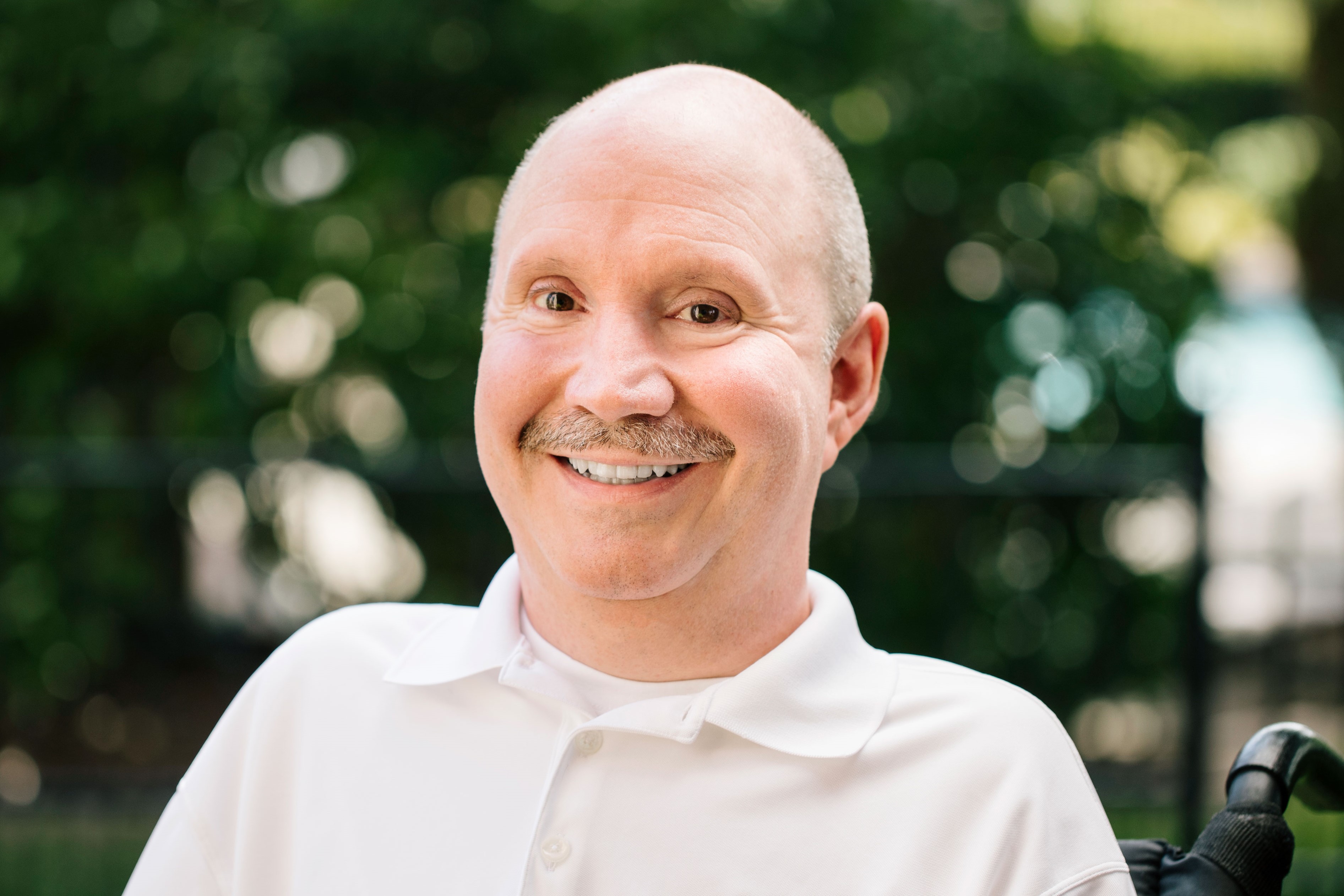
With patients that are diagnosed with SMA, they can have a hard time controlling their neck and trunk, which makes it more difficult to be independent with chair mobility, such as ascending and descending ramps, as well as assisting with transfers. When first starting these exercises, it is important to assess how much strength and motion the patient has to begin with, and then work in those ranges to increase strength and range of motion. Once strong in the ranges the patient has, you can work to increase those ranges to further increase independence and confidence.
When we began strengthening Michael’s core, we began with isometric strengthening, which is a static motion. There is no movement with isometric strengthening, only contraction of the muscles. We then worked into eccentric and concentric strengthening in which we began with the yellow resistance bands, this being the least resistance with bands. Once he got through the yellow band in lumbar and cervical forward bending, side bending and extension, we increased resistance and repetitions.
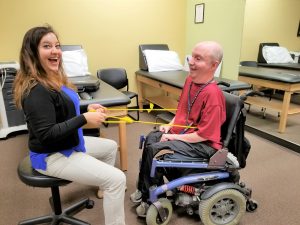
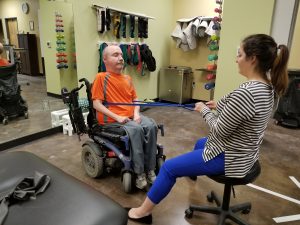
We have now moved to blue and black resistance bands with side bending and forward flexion of the trunk, which are the two most difficult resistance bands. Michael now has the ability to side bend in about 75% of his full range of motion, and return to neutral with control. This is important for being able to weight shift while sitting in his chair and lying in bed. He is also able to forward bend in about 65% of his full range of motion with a black resistance band, and return to neutral with good control. This is also important while weight shifting, dressing, and other ADL’s.
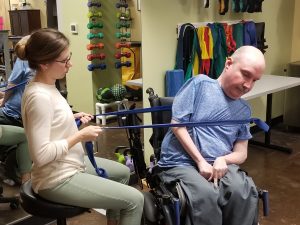
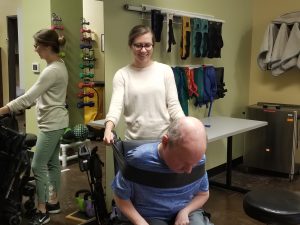
Something Michael really wanted to improve on was controlling coming back to neutral from full forward flexion and being able to provide more assistance while performing ADL’s, such as dressing. We examined how far he could perform lumbar flexion while seated in his chair and come back to neutral, which is about 41 degrees. Next, we took a light resistance band and added some resistance in a about 20 degrees forward flexion, to increase his strength, and we plan to keep increasing resistance and range of motion as he gains more strength.
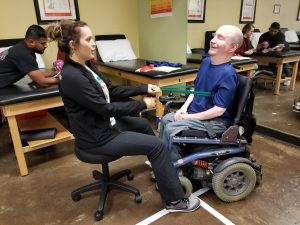

While all of the exercises above have been performed while seated in his chair, we also perform exercises while seated on a foam cushion on a therapy table. While seated in this position, Michael actively forward bends, backward bends, and side bends bilaterally as far as he can control. Without the support of his chair and while sitting on an uneven surface, it challenges his core to stabilize him while he actively moves in different directions.
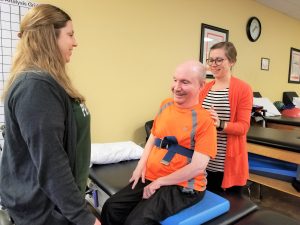

While we haven’t spent much time focusing on Michael’s neck, we have seen improvements in his strength while working with the resistance bands. We are using the red band, which is the second least resistance on extension, while using the blue bands for forward and side bending. For us to be able to perform the cervical extension exercise, we place a gait belt around Michael’s chest to keep him from compensating and to keep him in the right place. Forward bending is very strong, while backward bending is still lacking in strength. Because of this, we are performing concentric and isometric exercises with backward bending to continue progressing strength.
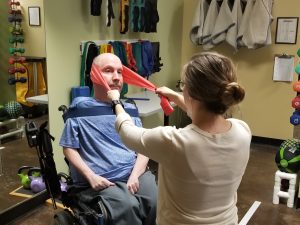
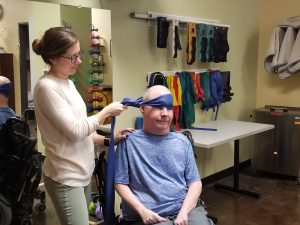
It is not easy to see improvements with Michael’s strength using the objective MMT scale, since it doesn’t allow for much variation. It is evident that he has significantly become stronger with his improvement in function, and increase in confidence with his daily activities.
======================== Patient Perspective ========================

After finishing my 2nd year of physical therapy, I can say without a doubt, that the work that I, and my physical therapists have put into it, have given me some benefits that have not only improved my strength, it’s also improved my outlook on my future. The fear of the unknown is a feeling that none of us like, and when you have a progressive disease like SMA, this fear is only exacerbated with the thought of getting older.
While I give a lot of credit to Biogen Pharmaceutical’s treatment known as Spinraza, I also need to acknowledge that my physical therapy has probably given me more encouragement and hope for my future. Physical therapists need to understand that working with the patient who has SMA, should not be considered a short-term goal. The objectives of maintaining muscle strength and possibly increasing muscle strength is a long-term objective for those of us with SMA, and while the increases in strength may be extremely difficult to measure by current standards, we as SMA patients, can feel these minuscule increases in the way that we feel. While these changes may be insignificant to most, they are life-changing for patients with SMA.

